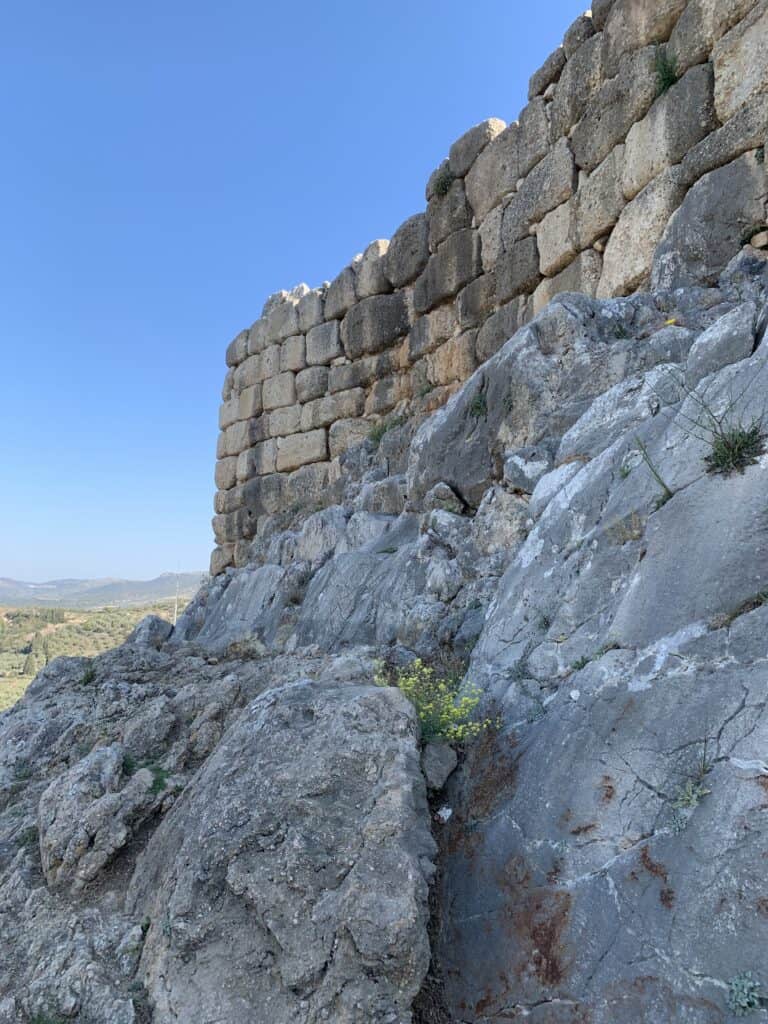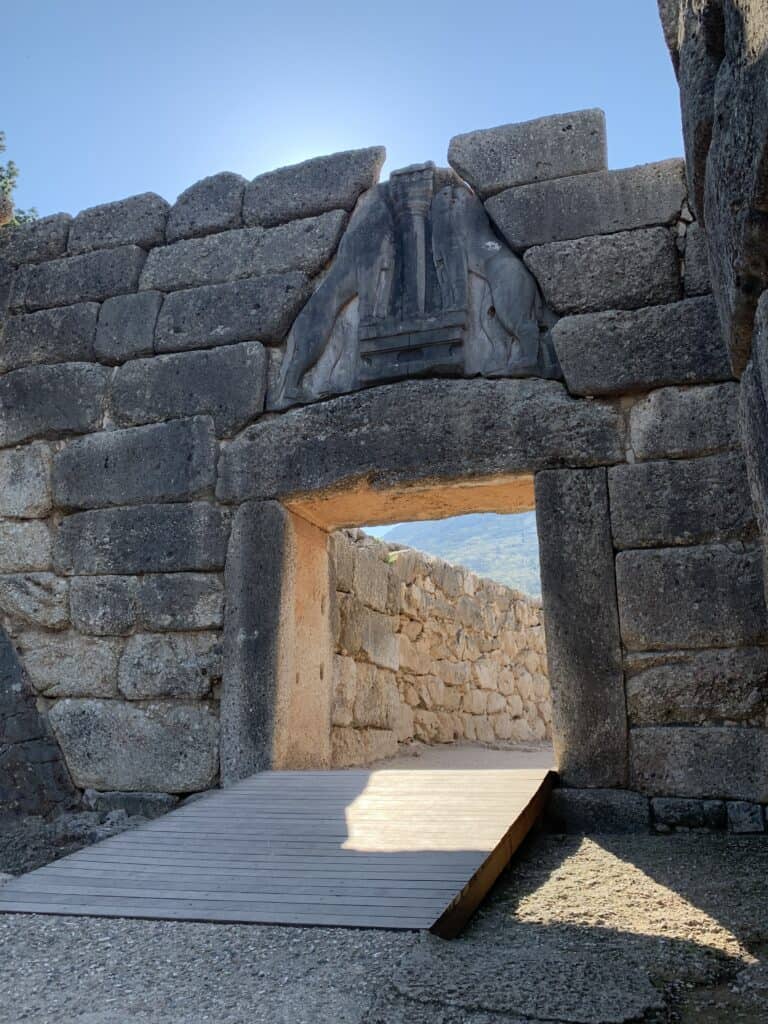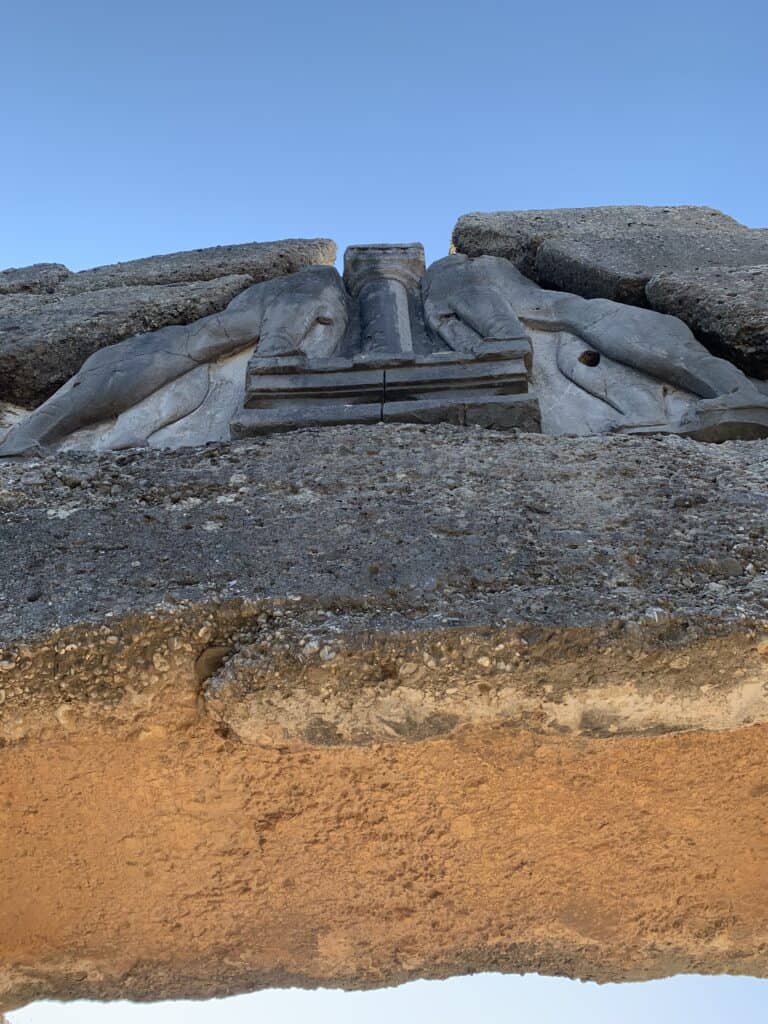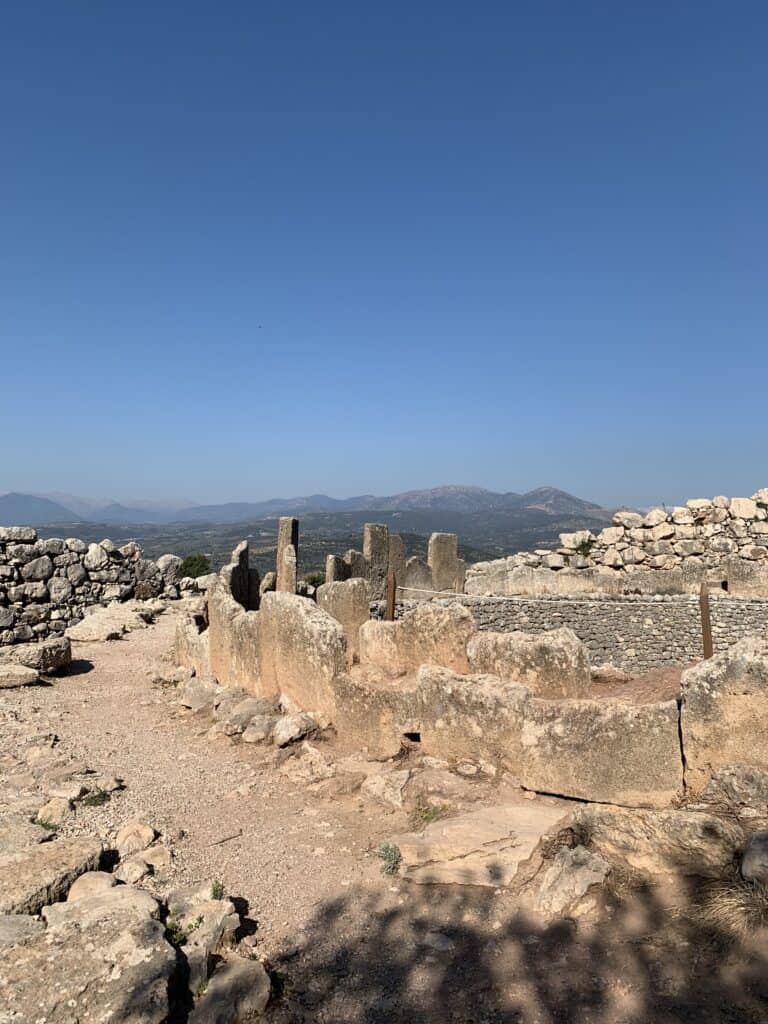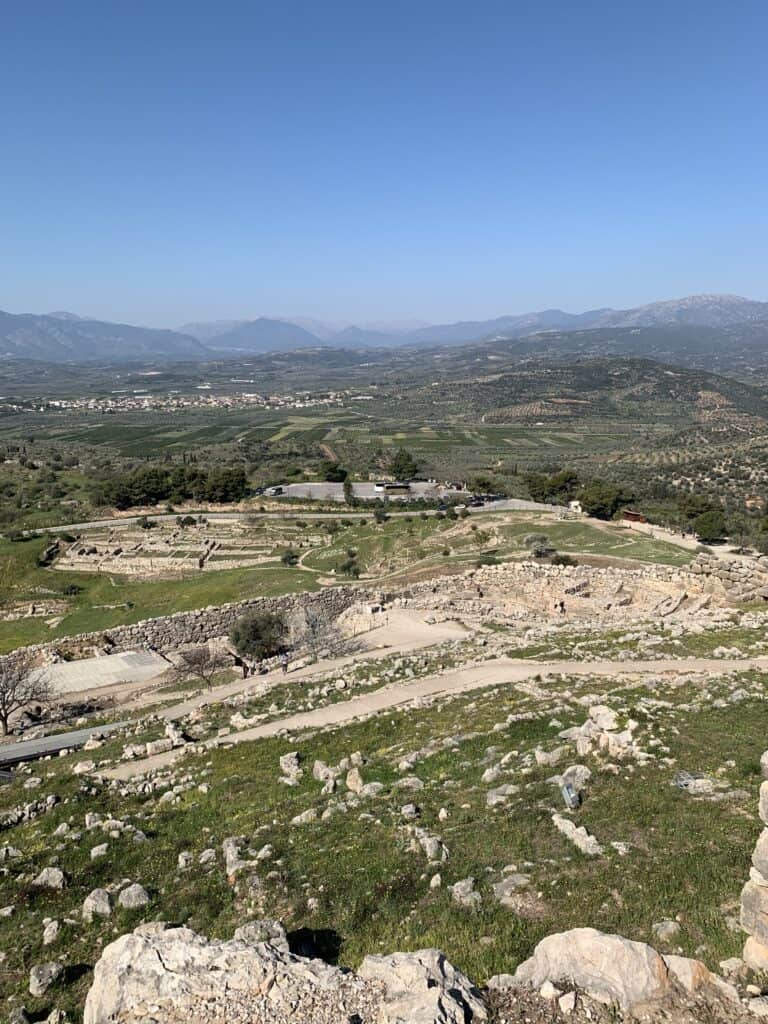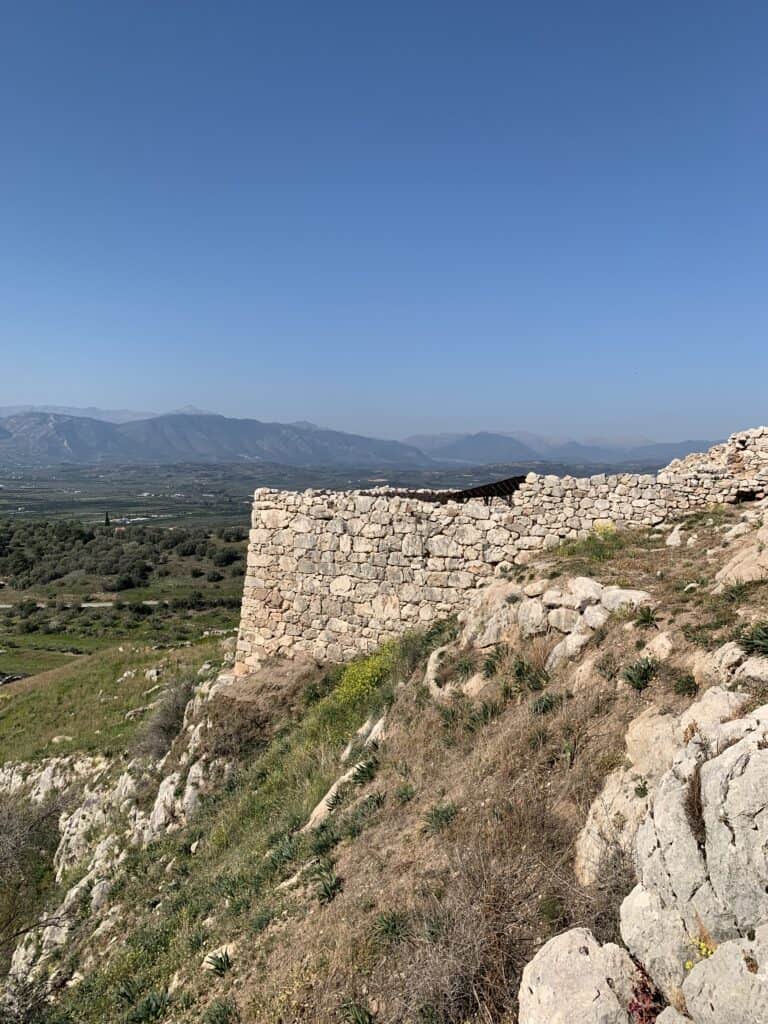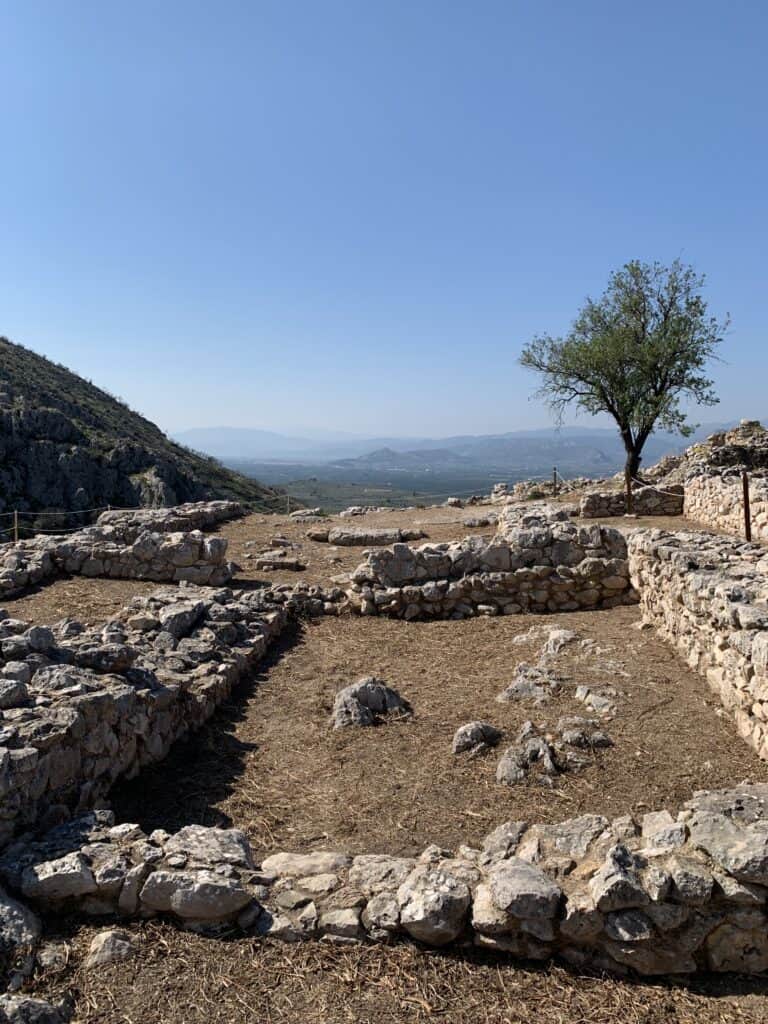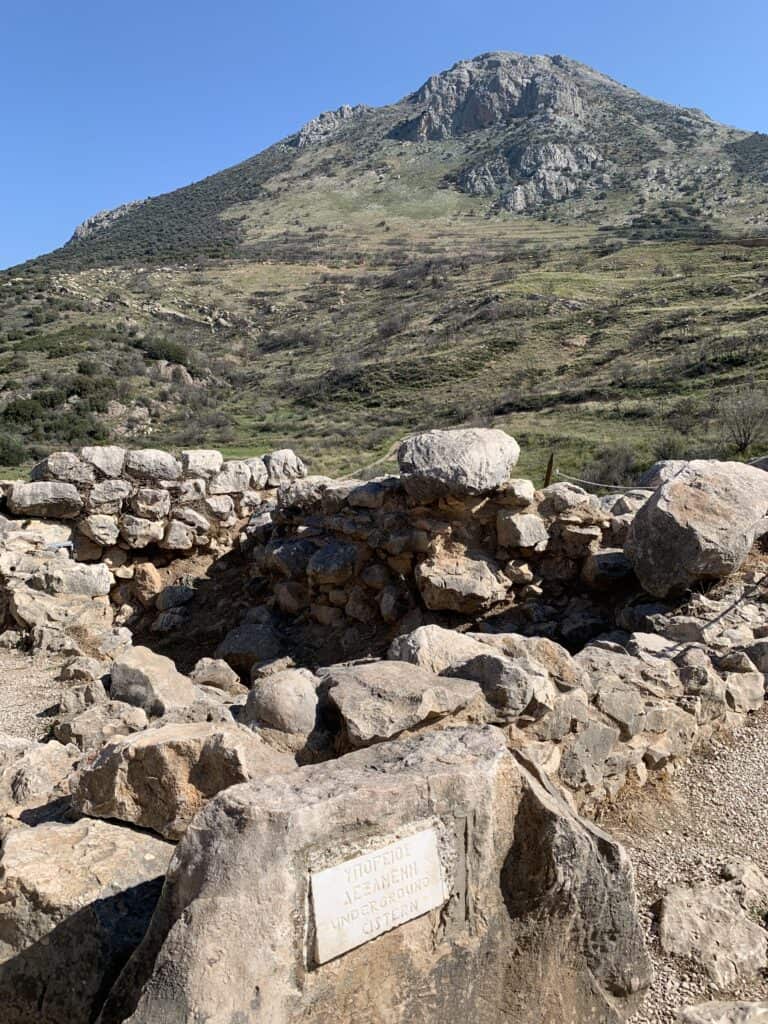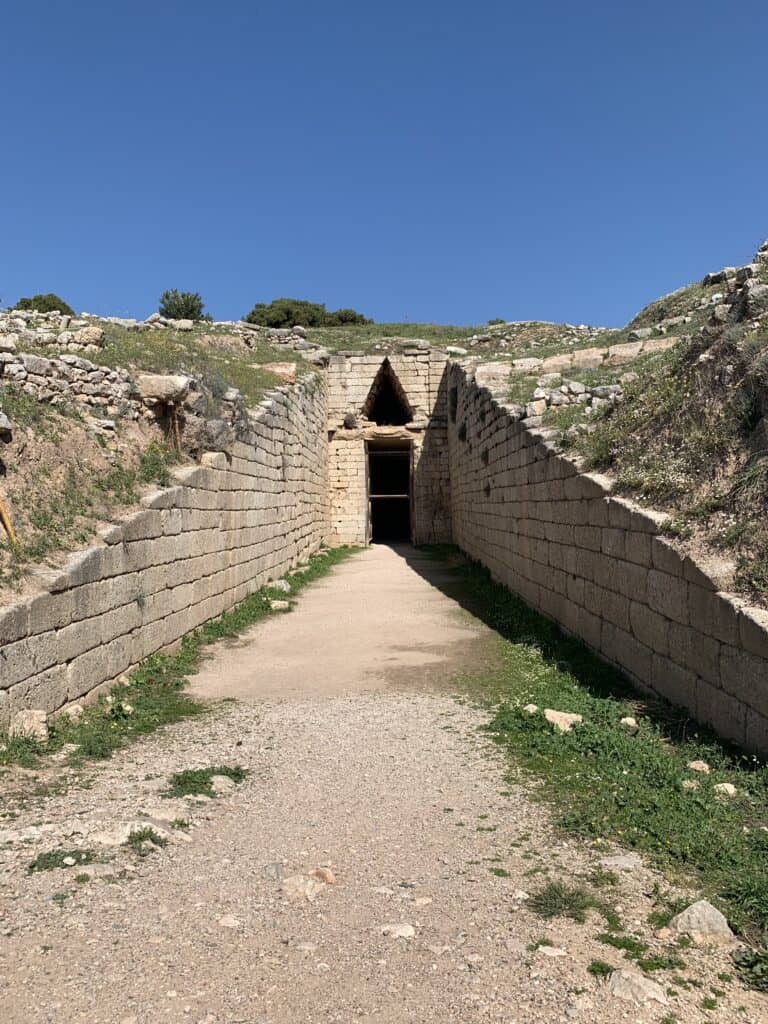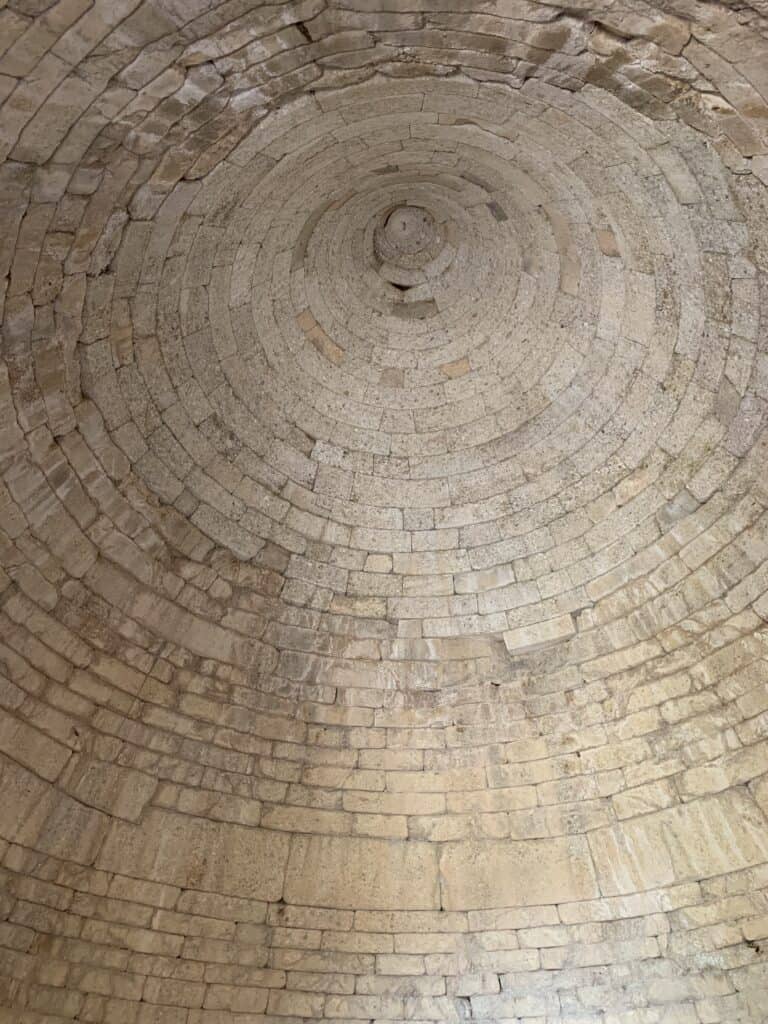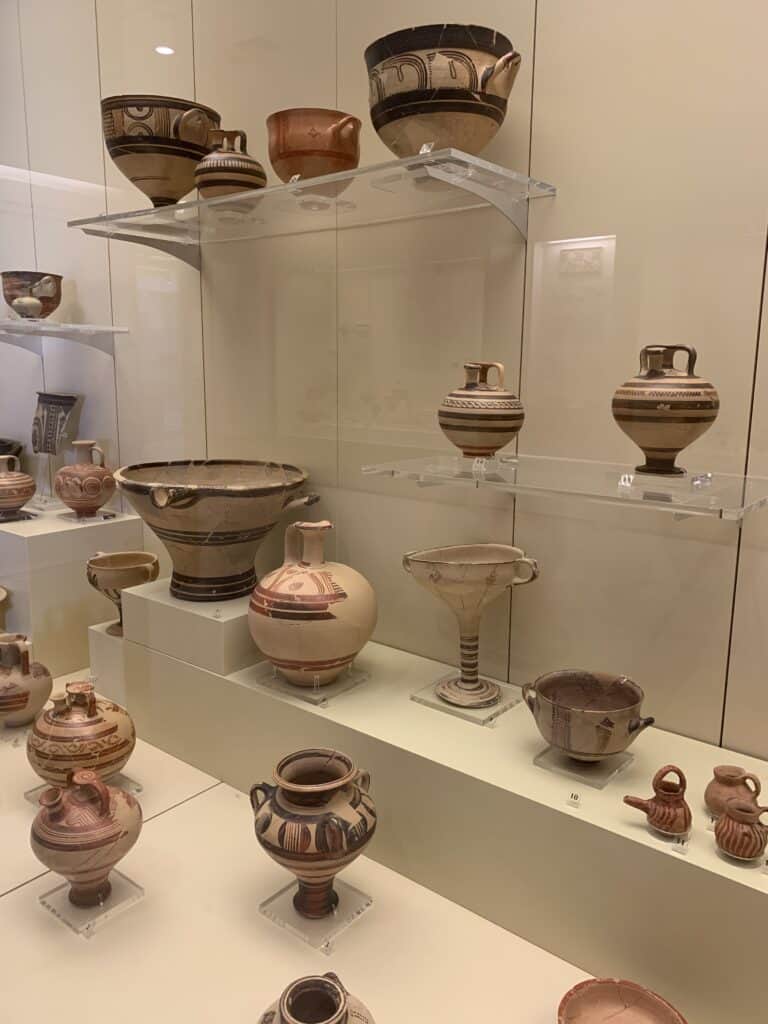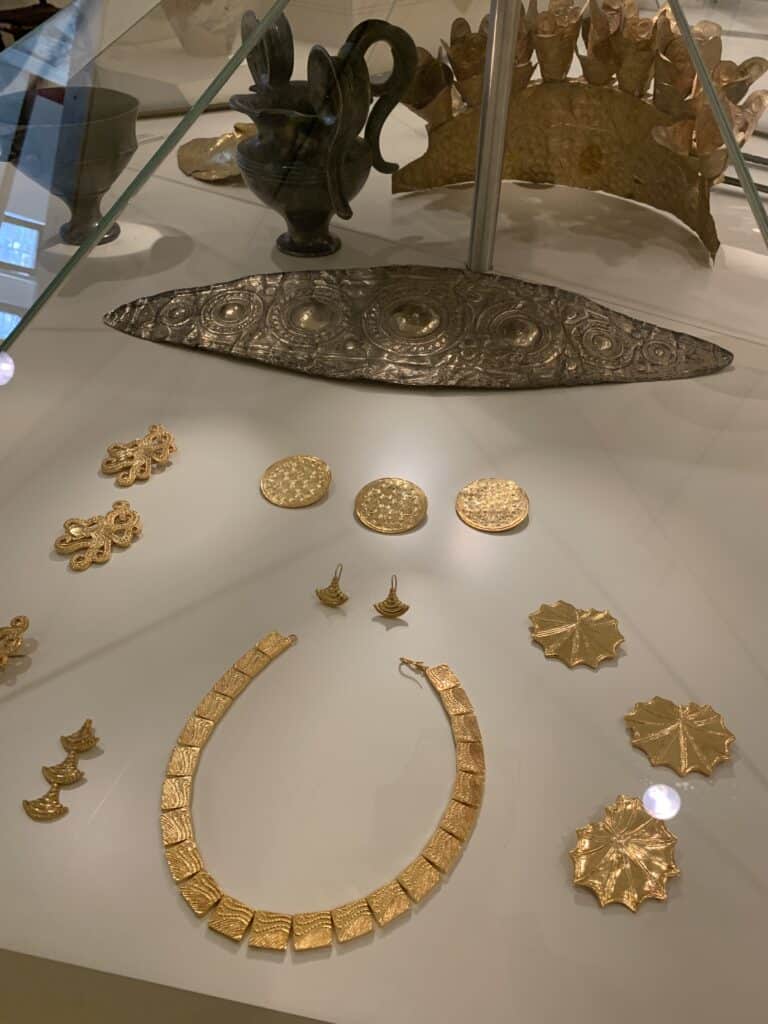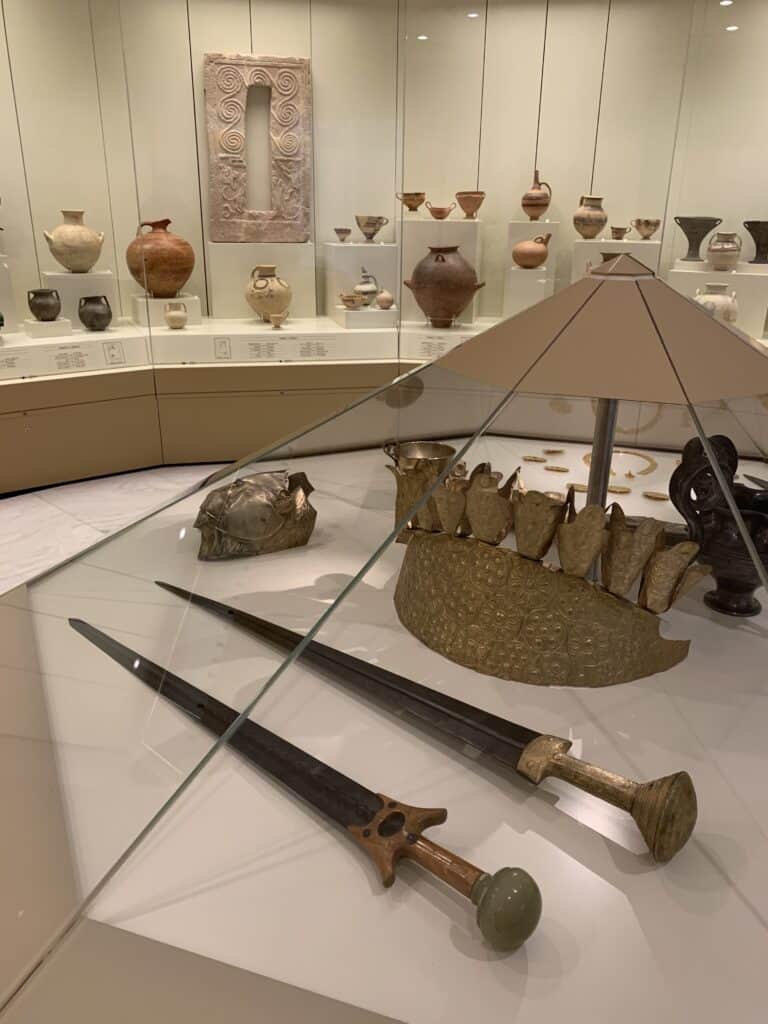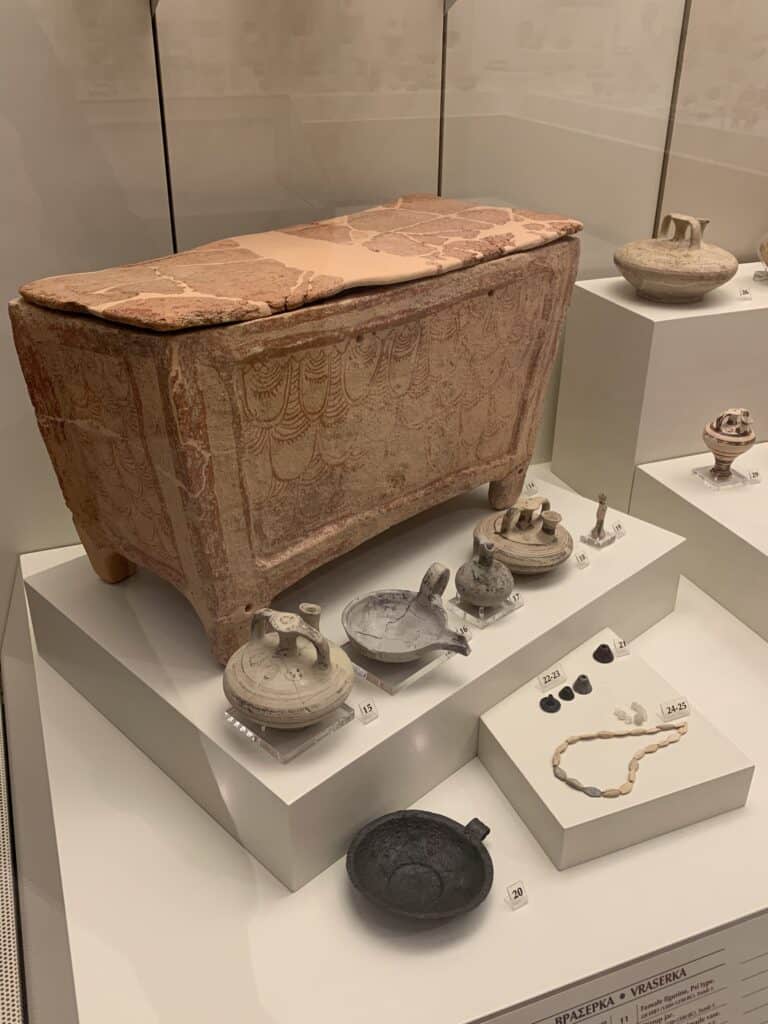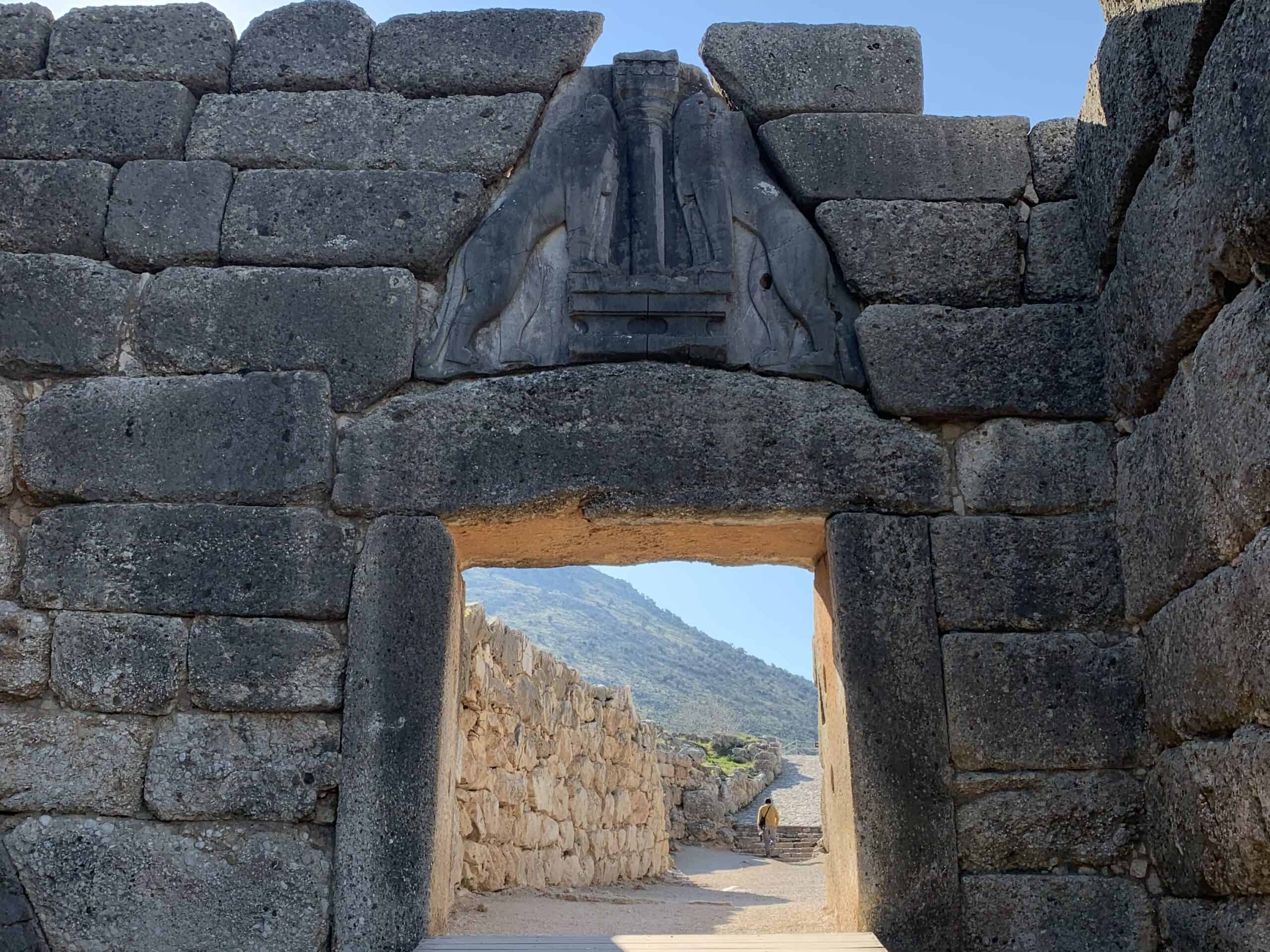
The archaeological zone of Mycenae is located in the hills of the Argolis region, about 120 km from Athens and is one of the most important treasures of Greece.
Mycenae was one of the richest and most influential city-states of the ancient world. Its heyday lasted 400 years, from 1600 to 1200 BC, during which the city was so important that it gave its name to an entire era: the Mycenaean period.
The name of Mycenae is also linked to its most famous King: Agamemnon, supreme leader of all Greeks in the Trojan War, whose deeds were immortalized by Homer in the Iliad.
Symbol of Mycenae is the Lions’ Gate, the majestic entrance to the city. The door, more than three meters high, is surmounted by a monolith decorated with two lions facing each other on the sides of a column.
Lions Gate is located along the wall complex that protected the ancient city, known as the Cyclopean Walls for its enormous size. According to legend, the construction of such imposing walls was only possible thanks to the help of a Cyclops, the giants with an eye of the Homeric tradition.
Passing through the Lions Gate are the remains of important buildings and on the top of the hill are the remains of the Royal Palace of Agamemnon.
Another unmissable stop on a visit to ancient Mycenae is the Treasure of Atreus, also known as the Tomb of Agamemnon. It is a circular construction where a member of a royal family was certainly buried, but it has never been proven that it is Agamemnon.
At the foot of the ancient citadel is the Archaeological Museum of Mycenae with a collection of over 2500 exhibits.
Some of the most beautiful works found in the excavations of Mycenae, such as the Mask of Agamemnon, are in the Archaeological Museum of Athens.



